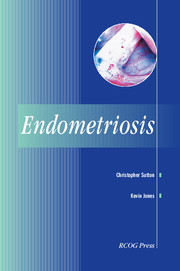Chapter 4 - Medical treatment
Published online by Cambridge University Press: 05 February 2014
Summary
Endometriosis is known to regress in pregnancy, under the influence of androgens, and after the menopause. Medical management aims to mimic these states, and the rationale behind the treatment strategies is to induce atrophy of the ectopic endometrium in order to relieve painful symptoms and restore fertility.
Because endometriosis is an oestrogen-dependent condition, drugs that suppress ovarian oestrogen activity, either directly or indirectly by suppressing pituitary function, are widely used. These include danazol, gestrinone and gonadotrophin-releasing hormone (GnRH) analogues. Visible disease and painful symptoms generally regress during physiological amenorrhoeic states, such as the menopause or pregnancy, and drugs that can induce amenorrhoea, such as combined oral contraceptives and the progestogens, are also used in the treatment of endometriosis. The symptomatic relief of pain can be achieved using simple analgesics, such as paracetamol and aspirin, or compound analgesic preparations containing these drugs in combination with low-dose opioid analgesics. The nonsteroidal anti-inflammatory drugs (NSAIDs) are particularly useful in treating dysmenorrhoea. However, a critical review of the medical management of endometriosis has shown that there is little difference in the effectiveness of the various treatments, and their use is limited by unacceptable non-therapeutic effects. Furthermore, many of the drugs have a contraceptive action, and this is clearly a disadvantage to a woman who is trying to conceive.
The randomised controlled trials on the surgical treatment of endometriosis have shown that surgery is effective in the management of both painful symptoms and subfertility.
- Type
- Chapter
- Information
- Endometriosis , pp. 29 - 36Publisher: Cambridge University PressPrint publication year: 2004



